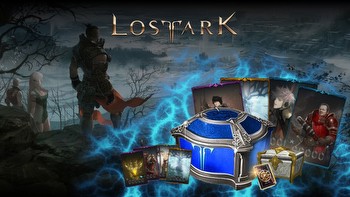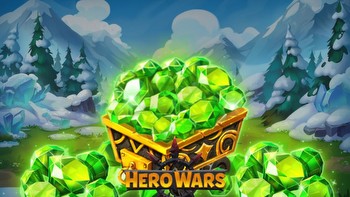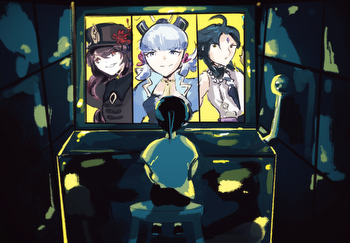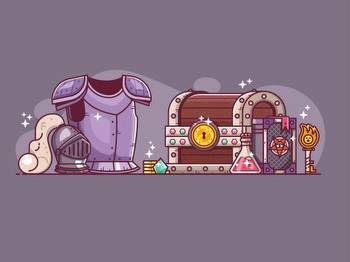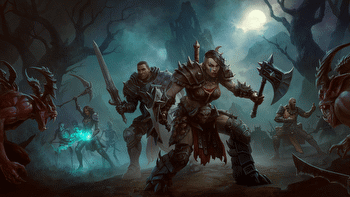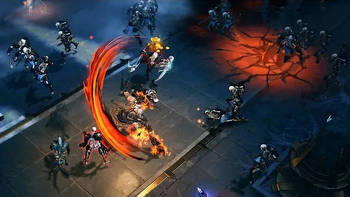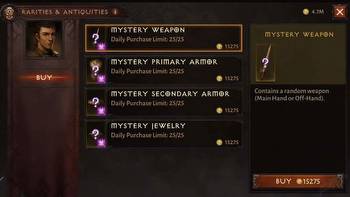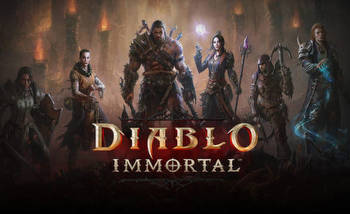Diablo Immortal reveals Diablo as the slot machine it always was
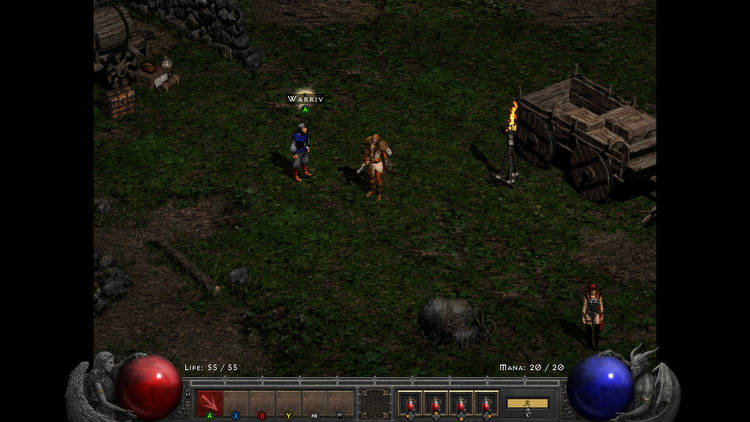
Microtransactions work a little too well with the Diablo formula
We all remember the announcement of Diablo Immortal at BlizzCon in 2018. The screaming, the crying, the foaming at the mouth at the very idea that the next installment of the hardcore RPG series would be a mobile game. That was how I felt when I heard the announcement. How dare Blizzard do this to a game series I remembered so fondly?
I’ve finally played Diablo Immortal, and it’s completely changed my mind. Diablo was made to be a mobile game all along, and Diablo Immortal proves it.
It’s been a bittersweet realization. The mobile game market does not have a great reputation among people who willingly use the word “gamer” to refer to themselves. Even the best mobile games are often shallow experiences, designed to be played in brief bursts while waiting at a bus stop or dentist’s office. Mobile games also have a reputation for embracing the worst kinds of money-grubbing and addictive design, using microtransactions and mechanics that border on gambling (in some countries, they’re legislated as such).
This history of not-unfair assumptions about mobile games resulted in a vitriolic response at BlizzCon 2018 — enough so that Blizzard issued a public defense of the game’s existence. This past April, Blizzard made another concession to the burned Diablo fan base by announcing Diablo Immortal would launch on PCs as well, despite that it was clearly created with mobile phones in mind. When I heard that news, I felt relieved that I’d be able to play the game on PC after all, but when Diablo Immortal launched a day early on mobile, I installed it on my iPhone 11 out of curiosity. That’s when I realized how wrong I’d been about Diablo all along.
My realization didn’t come out of nowhere. I’d already gotten an inkling of it when I played Diablo 2: Resurrected this past year. Diablo 2’s RPG mechanics have been thoroughly analyzed since its initial release in 2000; players are so familiar with the numbers under the hood that there are agreed-upon recommended builds for every character class. Of course, you can play however you want and still have a good time — but if you want to play tactically and efficiently, there’s not much variation in how the game will unfold. The only significant variation lies in the randomness of the loot.
That’s the real reason to keep playing Diablo 2, or any other Diablo game, if we’re being honest with ourselves: It’s fun to collect more and more gear, to get a piece of armor with a higher number on it than the one you’re wearing, and to keep watching your character’s stats climb higher and higher. Combat simply involves clicking around to attack or reposition your character, then clicking to collect more loot. The animations and sound effects that play when you kill each enemy have been fine-tuned to elicit a pleasure response, as is the case when you collect gold pieces and armor strewn all over the ground, shortly before you equip it (or break it down and sell it for more gold, for more loot with higher numbers). Your stats get higher, the numbers get bigger, the enemies get harder, and so the loot gets better, and your stats get higher … and so on and so on, forever.
Diablo 2 also introduced me to the mechanics that still make games addictive for me — and many other people — today. Take “unidentified” pieces of gear, for example; you can see some information about this gear, but you won’t know exactly how good it is until you reveal its stats with a special scroll sold in the game’s shop. These scrolls aren’t expensive, they’re not rare, and you don’t have to spend real money on them. So, why is this mechanic even in the game? Because it makes some of the loot a little more special, and a little more exciting — even though it’s not really that different from every other piece of loot you’re picking up. There is something delicious about that small sense of mystery — that tiny hurdle you have to clear in order to progress.
This is the same gimmick that the worst offenders of microtransaction-packed mobile games have deployed for decades now. You pick up an unidentified item — perhaps even a parcel of unidentified items, hidden in a mysterious treasure chest, let’s say. But you don’t have the key to open it yet. When you do get that key and unlock the chest, a beautiful sound plays, along with a special animation. Except then, the item inside the chest turns out to be useless for your character build. But … what’s that? Oh, it’s another chest. What’s inside this one? Maybe it’ll be different this time. Do you need to spend a little bit of real money to find out? A few cents, maybe? That isn’t so bad, is it? Remember how exciting it was, back when you didn’t know what was inside the chest? It could have been anything!
Of course, in Diablo 2, you aren’t spending real money to identify items. But you can easily imagine why somebody would do that. The design is right there; you already have to wait to find out if your item has a bigger number attached to it or not. This is why the real-money auction house in Diablo 3 happened — although it had serious flaws, and it ultimately was a failed experiment, the idea made sense. The next logical step for the series was always Diablo Immortal.
I’m only two hours into Diablo Immortal, and in all the best and worst ways, it is Diablo. You tap on the screen to attack, wait for your different attack types to cool down, and tap again, in the general direction of each enemy. The game doesn’t ever feel so brutal that you need something more precise than a thumb swipe to move across the screen. Deckard Cain is here and his voice is still gravely; cutscenes remain excessively corny and completely skippable. And, of course, all of the familiar, relaxing, and hopelessly addictive mechanics that have been central to Diablo for years have now been successfully interwoven with microtransactions. The dream of the real-money auction house has finally been realized.
You can play the whole game without spending a dime, of course, and the animations and sounds will still provide your brain’s pleasure centers with a very similar bevy of effects. The problem is that the result feels deeply embarrassing to me now. It’s still Diablo, and yet, now that it’s on my phone, it feels all the more like a slot machine — or perhaps, now that it’s in this format, I can see it for the slot machine that it always already was. Diablo Immortal’s microtransactions do not just feel predatory and manipulative; they feel like the final ingredient that allows an already-addictive series to attain its true form.
Maybe, as a multiplayer experience, Diablo Immortal would stop giving me a bad taste in my mouth, because my best friends would be there to distract me from what I’m now realizing the game was all along. I’m going to take it off my phone, though, because I don’t like the poison that it’s doling out. It’s the same poison it’s always been — the randomized loot, the temptation to play just a little longer to see if you get something better, and the numbers getting bigger and bigger and, ahhh, just a little bigger. But this time, with actual money!
What’s the difference, really? I mean, I know the difference. It’s worse when it’s real money, because that’s when you realize the extent to which the game has fucked with you. But for me, the painful part is the realization that there was never really all that much to Diablo in the first place. Blizzard has made it look easy, here, to hone in on the most addictive, predatory aspects of Diablo’s design, while also inspiring them to spend quite a bit of money.
It’s funny that we still refer to Diablo as an RPG, even though we all know the role-playing part is not, and never has been, the draw. (My friends and I used to play a meta game where we raced each other to see who could skip dialogue and cutscenes the fastest.) Sure, there’s some “role-play” in leveling up your character and choosing which attacks look the coolest. But Blizzard has not even bothered to include that as Diablo Immortal’s main selling point. Its genre description in the Apple Store doesn’t even have “RPG” or “role-play” in it. Instead, the genre is “Loot, Customize, and Explore,” and the most important part is the first word — loot. After all, that’s what Blizzard is going to be getting.








